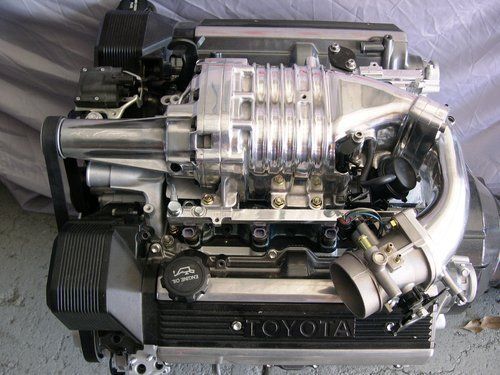
However, the frequency of this device has declined due to complaints about excessive noise and fuel consumption. Since the turbo lag phenomenon (some of the turbochargers) does not occur, some manufacturers prefer to install the supercharger on high-performance engines.
The supercharger offers an instant response as soon as the accelerator is pressed, as it does not have to rotate at high revolutions to begin to force the air into the engine. In addition, the new designs have reduced noise and improved fuel economy. Automotive homes use two types of superchargers: the Roots-type and the spiral type (or scroll). Roots Type The most common supercharger is Roots. It has two lobed rotors inside, which can be straight or helical profile.
The rotary motors engraved with each other and are moved by a belt or chain coming from the town at a speed two or three times higher than that of the motor rotation. The carburettor is usually installed in the intake nozzle of the supercharger so that the mixture of air and fuel flows through both. When the engine is an injection, the throttle body of the injection (TBI) is installed in the same place, only by the arrangement of the injectors (in the port near the cylinder head) it is specifically air that flows. The diagram shows the flow of the intake air through the Roots supercharger in an engine equipped with an injection port.
Air passes through the air filter and through the flow meter (which tells the ECM engine electronic control module how much air is entering). Subsequently, the air follows the butterfly and then the supercharger. The air fills the spaces between the lobes and the supercharger housing so that the rotors capture and discharge it at the exit port, directly to the intercooler in order to lower the temperature.
This discharged air compresses the existence in front of it, which creates the pressure of the manifold in the intake system. The Roots supercharger is defined as a positive displacement air pump. When the butterfly opens, each rotation of the rotors pushes the same volume of air into the intake manifold. This occurs regardless of engine speed.
In an engine, the maximum pressure (approximately 12 psi) is reached at about 4,000 rpm. the motor.
Parasitic losses At full capacity the supercharger steals power from the engine, which is called dragging or parasitic loss. To reduce, some come with a magnetic clutch controlled by the ECM that clings and disengages as required. At low load, the supercharger works disengaged.
A small toothed belt keeps the two axes rotating in the correct relationship or phase. The displacer divides the intake airflow between an internal and an external chamber. As the displacer shaft rotates, the axle cams move it circularly. This opens and closes the chambers formed by the spirals trapping the air, compressing and forcing it to the discharge port near the center of the pump.
No Comments Yet
Your email address will not be published.